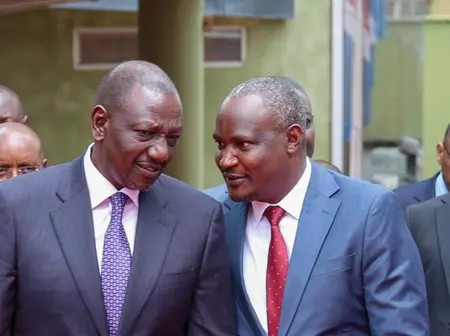Kenya is seeking to implement its first-ever debt-for-food security swap, a US$1 billion (Sh130 billion) arrangement with the World Food Programme (WFP) scheduled for March 2026.
The deal could ease pressure on the country’s ballooning debt while channeling much-needed resources into tackling food insecurity.
A debt swap is a financing mechanism where a creditor agrees to cancel or restructure part of a country’s debt if the government redirects the equivalent value into specific development priorities.
Instead of using foreign currency reserves to repay the loan, the government invests in pre-agreed programmes that are monitored by the creditor or a third party.
If the deal goes through, the WFP would work with the National Treasury to ensure that funds equivalent to US$1 billion are dedicated to food security initiatives.
These may include investments in irrigation, agricultural inputs, food distribution networks, and resilience projects designed to reduce reliance on food imports and protect vulnerable households from hunger.
If Kenya successfully demonstrates that the money has been used for its intended purpose, the debt will be waived.
At the same time, millions of Kenyans remain food insecure due to climate change, prolonged droughts, and rising import bills.
The swap presents an innovative way of addressing both problems at once. By linking debt relief to food security, the government can free up fiscal space while advancing development goals.
It also signals a shift towards more creative financing options at a time when traditional financing options are becoming harder for the country.
This is not Kenya’s first experience with debt swaps.
Similar agreements have been struck in countries such as Ecuador and the Philippines, often tied to environmental conservation or health programmes.
Debt-for-food swaps, however, are relatively new. The Kenya-WFP arrangement could therefore set an important precedent for other African countries struggling to balance high debt repayments with pressing development needs.
For the swap to succeed, accountability and transparency will be crucial.
Treasury will need to clearly outline which projects will be prioritised and how progress will be measured.
Independent monitoring by WFP is expected to provide some safeguards, but questions remain about Kenya’s capacity to track and report effectively on large-scale public projects.
The Treasury has indicated that the agreement will be finalised by March 2026.
In the coming months, details on the specific food security projects and oversight framework are expected to emerge.
For now, Kenya’s US$1 billion debt-for-food security swap represents a bold experiment, one that could turn a portion of its debt burden into an investment in feeding its people.

Leave a Reply